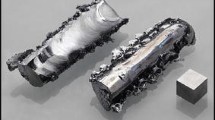Abstract
The interaction with nitric oxide (NO) is an important aspect of the biological activity of vitamin B12 (Cbl). Whereas the formation of nitroxylcobalamin (CblNO) via the binding of NO to reduced CblCo(II) has been studied in detail before, the possible intracellular formation of CblNO via reduction of nitrocobalamin (CblNO2) is still questionable. To study this further, spectroscopic and kinetic studies on the reaction of CblNO2 with the intracellular antioxidant ascorbic acid (Asc) were performed in aqueous solution at the physiological pH of 7.2. It was found that the redox pathway of this reaction requires anaerobic conditions as a result of the rapid re-oxidation of reduced CblCo(II). In the studied system, both CblOH2 and CblNO2 are reduced to CblCo(II) by ascorbate at pH 7.2, the CblOH2 complex being two orders of magnitude more reactive than CblNO2. Clear evidence for redox cycling between CblOH2/CblNO2 and CblCo(II) under aerobic conditions was observed as an induction period during which all oxygen was used prior to the formation of CblCo(II) in the presence of an excess of ascorbate. No evidence for the intermediate formation of CblNO or NO radicals during the reduction of CblNO2 could be found.
Graphical Abstract
Nitrocob(III)alamin can be reduced by ascorbic acid under physiological conditions. The products of the reaction are cob(II)alamin and nitrite ion. This reaction is ca. 200 times slower than the one involving aquacob(III)alamin.















Similar content being viewed by others
References
Kröncke K-D, Fehsel K, Kolb-Bachofen V (1997) Nitric Oxide 1:107–120
Ignarro LJ, Cirino G, Casini A, Napoli C (1999) J Cardiovasc Pharmacol 34:879–886
Snyder S (1992) Science 257:494–496
Moncada S, Palmer RM, Higgs EA (1991) Pharmacol Rev 43:109–142
Henry Y, Guissani A (1999) Cel Mol Life Sci 55:1003–1014
Mannick JB, Schonhoff CM (2004) Free Radical Res 38:1–7
Wolak M, Zahl A, Schneppensieper T, Stochel G, van Eldik R (2001) J Am Chem Soc 123:9780–9791
Goulding CW, Postigo D, Matthews RG (1997) Biochemistry 36:8082–8091
Banerjee R (ed) (1999) Chemistry and biochemistry of B12. Wiley, New York
Wolak M, Stochel G, Hamza M, van Eldik R (2000) Inorg Chem 39:2018–2019
Hannibal L, Smith CA, Jacobsen DW, Brasch NE (2007) Angew Chem Int Ed 46:5140–5143
Anes JM, Beck RA, Brink JJ, Goldberg RJ (1994) J Chromatogr B 660:180–185
Smith EL, Fantes KH, Ball S, Waller JG, Emery WB, Anslow WK, Walker AD (1952) Biochem J 52:389–395
Walker DT, Dassanayake RS, Garcia KA, Mukherjee R, Brasch NE (2013) Eur J Inorg Chem 2013:3049–3053
Marques HM, Knapton L (1997) J Chem Soc Dalton Trans. doi:10.1039/A703139D:3827-3834
Grynkiewicz G, Poenie M, Tsien RY (1985) J Biol Chem 260:3440–3450
Katafias A, Limpert O, Kita P, Fenska J, Koter S, Kaczmarek-Kedziera A, Rozycki H, Bajek A, Uzarska M, van Eldik R (2014) Eur J Inorg Chem 2529–2535
Lente G, Fabian I (2004) Inorg Chem 43:4019–4025
Schneppensieper T, Wanat A, Stochel G, Goldstein S, Meyerstein D, van Eldik R (2001) Eur J Inorg Chem 2001:2317–2325
Nazhat NB, Golding BT, Johnson GRA, Jones P (1989) J Inorg Biochem 36:75–81
Beaven GH, Johnson EA (1955) Nature 176:1264–1265
Lu N, Chen C, He Y, Tian R, Xiao Q, Peng Y-Y (2014) Nitric Oxide 40:1–9
Acknowledgments
The work was supported by the National Science Centre in Poland (Grant No. DEC-2012/05/B/ST5/00389). The Faculty of Chemistry of the Jagiellonian University is the beneficiary of the structural funds from the European Union, Grant No. POIG. 02.01.00-12-023/08 “Atomic Scale Science for Innovative Economy (ATOMIN)”.
Author information
Authors and Affiliations
Corresponding author
Electronic supplementary material
Below is the link to the electronic supplementary material.
Rights and permissions
About this article
Cite this article
Polaczek, J., Orzeł, Ł., Stochel, G. et al. Mechanistic information on the nitrite-controlled reduction of aquacob(III)alamin by ascorbate at physiological pH. J Biol Inorg Chem 20, 1069–1078 (2015). https://doi.org/10.1007/s00775-015-1288-9
Received:
Accepted:
Published:
Issue Date:
DOI: https://doi.org/10.1007/s00775-015-1288-9




